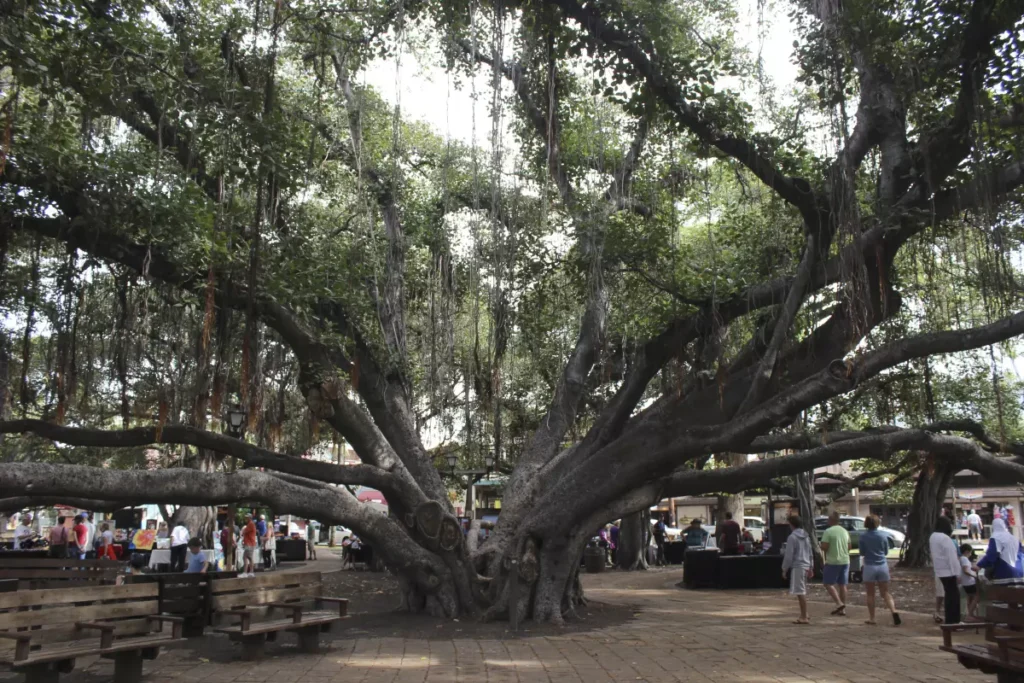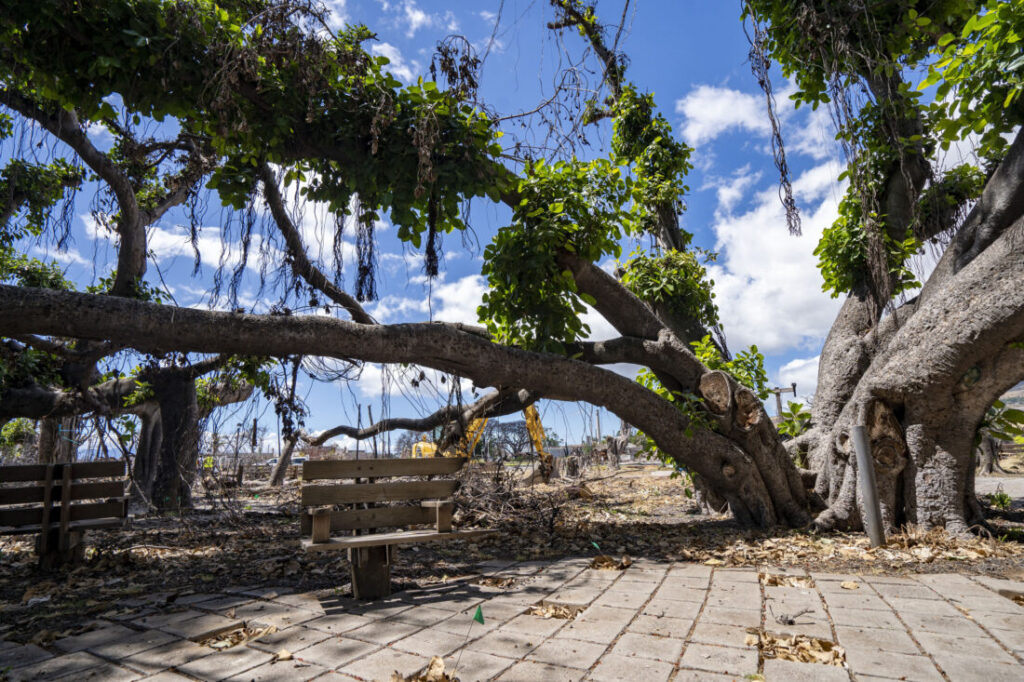Lahaina’s 151-year-old banyan tree is recovering after a devastating wildfire swept through the town in Maui, Hawaii last August.
Thanks to the tireless efforts of arborists and dedicated volunteers, parts of the tree are now growing back.
The banyan tree is the oldest living tree on Maui, and was a gift from India to commemorate the 50th anniversary of the arrival of the first Protestant missionaries in Lahaina.
The tree is a locally important site. “It is listed as an Exceptional Tree by the County of Maui which gives it protections similar to an historic designated building,” Kimberly Flook, the deputy executive director of the Lahaina Restoration Foundation, told Newsweek after the fire.

“As a 150-year-old tree in the center of the historic town, it has been a natural gathering place through the years. It has hosted luaus, festivals, hula demonstrations, picnics, war memorials, etc. over its lifespan.”
“On a less formal level, locals and visitors alike have enjoyed its shade and benches as well as the sound of the mynah birds in its branches every evening.”
The 2023 wildfire charred the tree and blackened many of its leaves.
According to Duane Sparkman, chair of the Maui County Arborist Committee, it was the intense heat that dried out much of the tree, leading to the death of about half its branches.
“Once that section of the tree desiccated, there was no coming back,” Sparkman told The Associated Press.

However, other parts of the tree are now showing signs of healthy regrowth.
Dead branches were removed by arborists to direct the tree’s energy towards surviving parts.
Fourteen sensors, acting like a “heart monitor,” were installed to track the flow of cambium (sap) through the branches.
Sparkman reported that the tree’s vitality is steadily improving.
Future plans include installing vertical tubes filled with compost to nurture the aerial roots and an irrigation system to feed small drops of water into these tubes.
This setup aims to strengthen the aerial roots and stabilize the tree further.
Sparkman has observed long branches with hundreds of new leaves, some even producing fruit, which he describes as “pretty amazing.”
Planted in 1873, the tree predates Hawaii’s status as a U.S. territory and the establishment of Lahaina as the capital by King Kamehameha.
While beloved by tourists and locals as a symbol of Lahaina’s community, the tree also serves as a reminder of the colonial history of Hawaii.
Towering over 60 feet high, the tree spans nearly an acre with its multiple trunks.
Aerial roots hanging from its boughs eventually latch onto the soil to become new trunks, contributing to the tree’s expansive structure.
The wildfire destroyed approximately 25,000 trees in Lahaina, including culturally significant trees like the ulu (breadfruit tree), with only two surviving out of a dozen.
Sparkman and a group of arborists, farmers, and landscapers have been working to save and replant these important trees.
Sparkman founded a nonprofit called Treecovery, which has potted around 3,500 trees, growing them in “micro-nurseries” across Maui until residents can return to their homes.
“We have grow hubs all over the island of Maui to grow these trees out for as long as they need. So when the people are ready, we can have them come pick these trees up and they can plant them in their yards,” Sparkman said. “It’s important that we do this for the families.”

